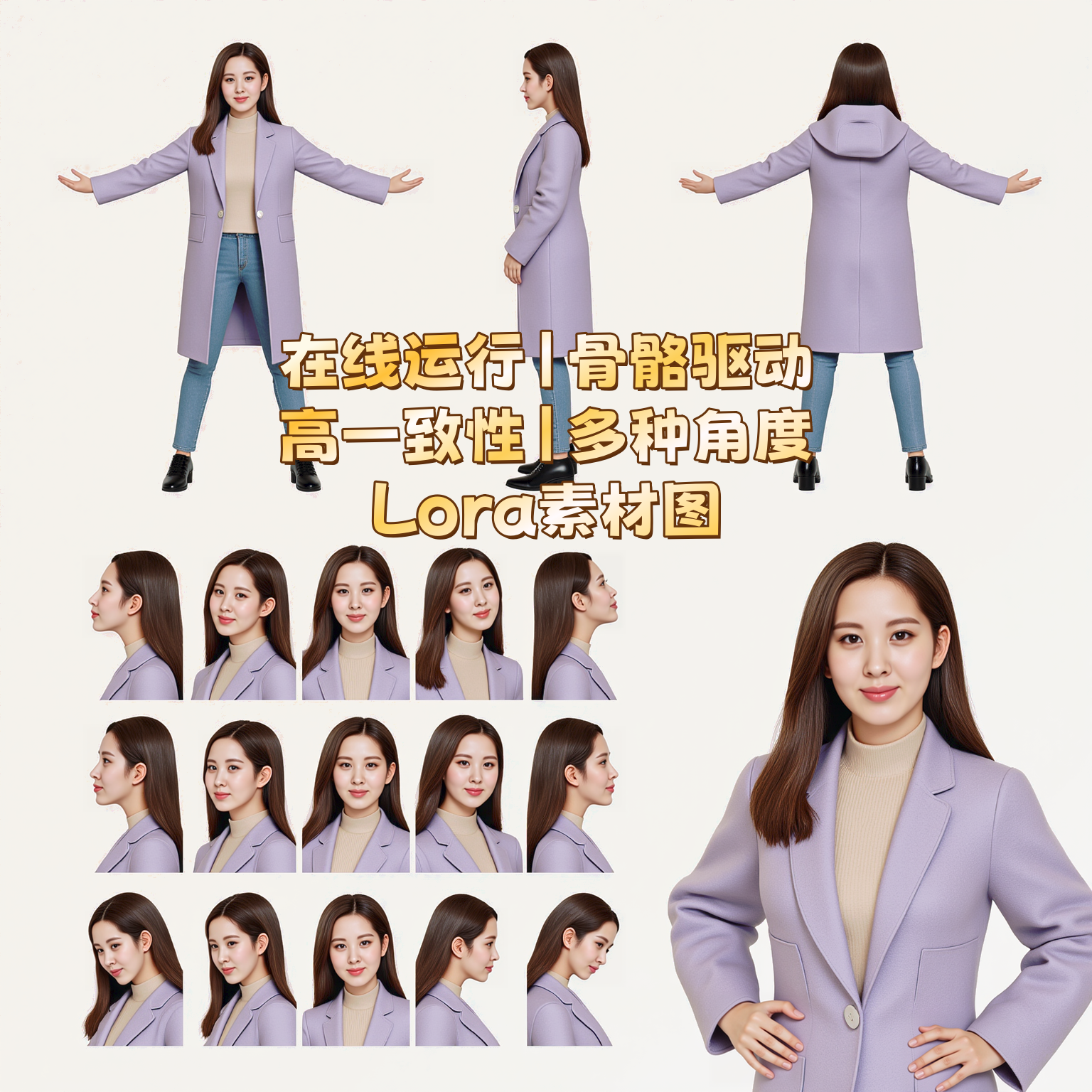Unlock Efficient Character Image Creation: A Comprehensive Workflow Guide
1. Workflow Overview

This workflow is designed for batch generation of multi-view character images, ideal for LoRA training data preparation. Key stages:
Multi-View Generation: Creates consistent character images from OpenPose skeletons + reference photos
Upscaling: Enhances resolution via FLUX model
Local Refinement: Fixes face/hand details
Cropping: Splits images into standardized tiles
Core Technologies:
SDXL + PulID Flux (identity preservation)
ControlNet OpenPose (pose control)
StableSR (denoising & super-resolution)
2. Core Models
Model | Function | Source |
|---|---|---|
| Base image generation | Built-in |
| Identity binding | |
| Pose control | Manual install |
| Super-resolution |
3. Key Nodes
Node | Purpose | Installation |
|---|---|---|
| Identity preservation |
|
| Face repair |
|
| Color correction |
|
| Auto captioning |
|
4. Workflow Structure
Group 1: Multi-View Generation
Input: OpenPose skeleton + reference image + prompts
Process: ControlNet for pose + PulID for consistency
Output: 1024x1024 images
Group 2: FLUX Upscaling
Input: Raw generated images
Process: 1.5x upscale + detail refinement
Output: 1536x1536 HD images
Group 3: Local Repair
Targets:
Faces (detected by
face_yolov8m)Hands (detected by
hand_yolov8s)
Group 4: Batch Cropping
Parameters: Custom crop coordinates (adjust manually)
Output: 640x832 standardized tiles
5. Input/Output
Input Parameters:
Required:
OpenPose skeleton image
Character reference photo (upper-body recommended)
Prompt (e.g., clothing description)
Optional:
ControlNet strength (0.5-0.7)
Seed value
Output:
Cropped character images (PNG)
Super-resolution comparison slider
6. Notes
Hardware: 12GB+ VRAM recommended. Use
--medvramfor low-end GPUs.Critical Parameters:
ControlNet end time: 0.4-0.6
Face repair steps: ≥20
Troubleshooting:
Download
pulid_flux_v0.9.0.safetensorsmanually if missingSkeleton image resolution ≥1024x1024